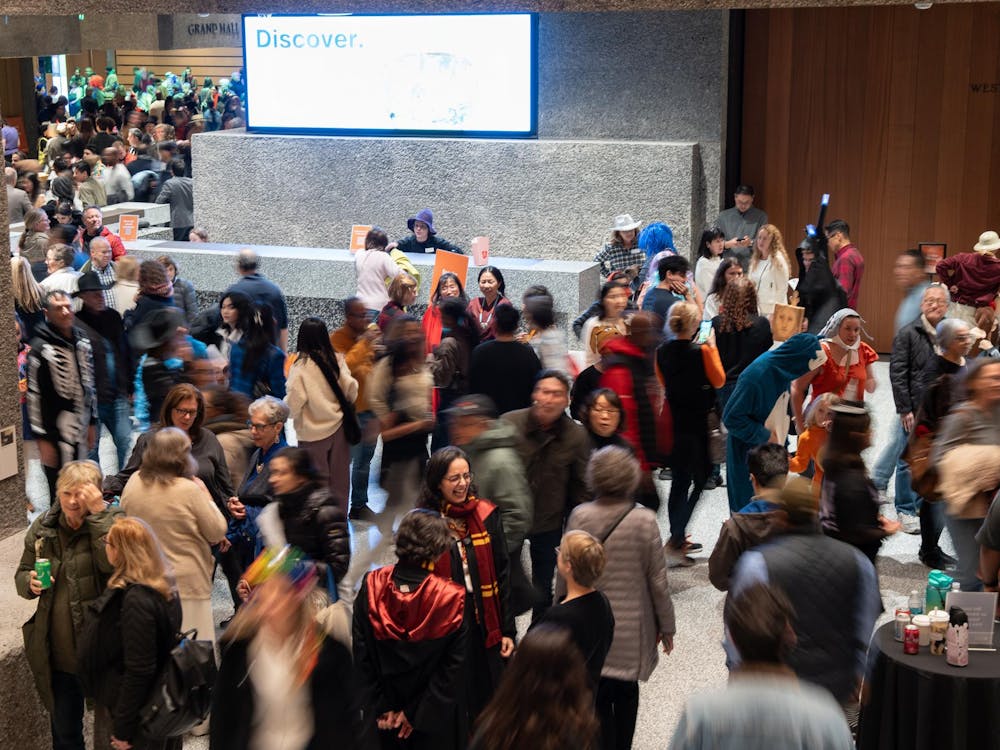Professors Bonnie Bassler and Lyman Page were elected Tuesday as new members of the National Academy of Sciences in recognition of their achievements in scientific research. This brings the total number of current NAS members at the University to 72.
Membership in the National Academy of Sciences (NAS) — established by President Lincoln in 1863 — is considered one of the highest honors in American science and engineering. Seventy other researchers were elected to the NAS this year, in addition to Bassler and Page.
Bassler, a member of the Department of Molecular Biology, was selected for her research on quorum sensing, a mechanism that bacterial cells use to communicate with neighboring bacteria.
Physics professor Page was honored for his contributions to the study of variations in cosmic microwave background, which is a key to understanding the state of the early universe.
In return for the prestige that comes with membership, NAS members are asked to serve on various advising committees, Maureen O'Leary, director of public information at NAS, said.
"Members of the NAS serve the government by advising them on science policy and producing reports," she said. "The majority of our reports are requested by the government, but some private firms use them as well."
The researchers
When Bassler learned of her selection, she was both "surprised and thrilled." But she was quick to credit her research assistants for the honor.
"Science is very much a shared thing. I'm being honored for this position, but it's all due to my lab group that worked with me," she said.
Bassler, who was also awarded the 2002 MacArthur Fellowship for her research, emphasized the surprising results of her research on quorum sensing.
"People thought that bacteria lead individual lives, but in fact they communicate amongst themselves," she explained. "We think this may be how multicellularity developed."
Bassler's research could potentially lead to the development of new antibiotics.
If one could interfere with quorum sensing so bacteria did not know they were in groups, "one could make effective antibiotics that work not by killing but by disrupting [bacteria]," Bassler said.

Professor Thomas Silhavy, who chaired the committee that hired Bassler into the molecular biology department, was not surprised by her selection.
"She has won a number of awards in the last few years, so it's pretty clear that she has been doing things well," he said. "She's a wonderful colleague, extremely energetic and gregarious and a lot of fun."
Page has also invested a considerable number of years into his research, being involved with the study of cosmic microwave background from its nascent stages.
"[Page] was the first one to confirm the variations as a graduate student at MIT using a balloon," astrophysics professor David Spergel said. "He confirmed them for a second time using a ground-based telescope in Saskatoon, [Canada]."
Spergel said that the subtle variations in background microwave radiation intensity are crucial in understanding the earliest stages of our universe.
"These variations have given us accurate estimates of the universe's range, density of matter, amount of matter and rate of expansion," he noted.
Lyman, along with his late mentor David Wilkinson, were also the leading proponents of the Wilkinson Microwave Anisotropy Probe (WMAP), a satellite orbiting the sun that could measure variations in microwave intensity with even greater precision than before.
Physics department chair Daniel Marlow regards Page's selection as an honor well-deserved.
"Having witnessed all of the incredibly hard work on the part of Lyman and his collaborators that went into the WMAP project, I was very pleased to see his achievements recognized in this way," Marlow said in an email.
Page is currently in Chile working on the Atacama Cosmology Telescope, which, when completed, will be used to perform similar tasks as the WMAP satellite in mapping variations in microwave radiation. Page could not be contacted for comment.
The induction ceremony for the new members of the NAS will be held at the academy's next annual meeting in April. NAS membership currently comprises approximately 2,000 members and 350 foreign associates, of whom more than 200 have won Nobel Prizes, according to an NAS press release.







